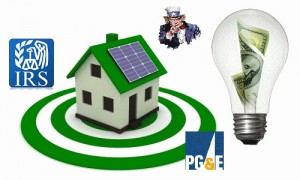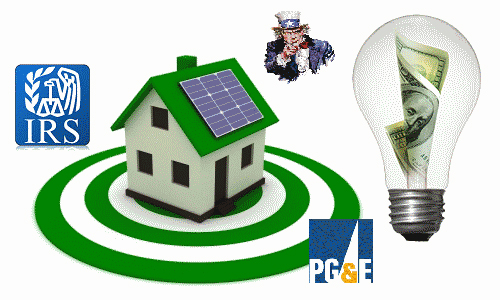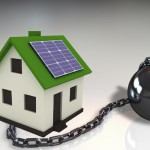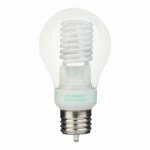 Have you heard about the many rebates, incentives and tax credits available for you now or in the near future? It’s been all over the media, and you might have heard about it from the President himself – Energy Efficiency in our homes is critical for a sustainable, healthy and fruitful future. In fact he called it “sexy.” Way to go Mr. President!
Have you heard about the many rebates, incentives and tax credits available for you now or in the near future? It’s been all over the media, and you might have heard about it from the President himself – Energy Efficiency in our homes is critical for a sustainable, healthy and fruitful future. In fact he called it “sexy.” Way to go Mr. President!
According to a memo by the President’s Economic Recovery Advisory Board,
“There are 100 million homes in America, and energy-saving measures like insulation, caulking, and heating and cooling system upgrades can reduce household energy consumption by 10 percent to 40 percent.” One little problem… Who’s really going to cough up all this hard earned cash these days to make their homes more “green”?
Now, it’s safe to say that there are plenty of DIY projects for homeowner to get started on, i.e. programmable thermostats, smart power strips, CFL lighting, low-flow shower heads and faucets etc. but, to attack more than these items and gain greater energy reductions typically requires professional services; and it’s not cheap to retrofit a home.
For example, some of the services that are typical of a home retrofit would require professional services like:
– Pre- and post-testing to quantify energy reductions
– Air sealing
– Beefing up insulation
– Mechanical upgrades
– Appliance upgrades
– Envelope enhancements
– Electrical control upgrades
– Renewables (solar hot water and photovoltaic and wind technologies)
I don’t know about you, but for most home owners these tasks can be way more daunting than just replacing light bulbs. But most importantly, how do we achieve such energy reductions in homes when a majority of these 100 million households just can’t afford the upfront costs?
The answer is…. Rebates, Incentives and Tax Credits!
It’s not that we don’t want to lower our energy consumption and carbon footprints; it’s that we typically can’t afford to do it. Uncle Sam knows this and he has a way of encouraging home owners to jump on the efficiency train. Money, money, money…
Here’s what you need to know about the different programs and whether they’re active or not:
ARRA Tax incentive (active): Through 2010 there are federal tax credits available. Low hanging fruits like air and duct sealing get up to 30% credit off the costs of materials up to a $1,500 cap. Major system replacements like HVAC and windows get up to 30% credit including labor, with a $1,500 cap and Renewables can get 30% of total project with no cap.
WAP Program (active): The Weatherization Assistance Program has been around for a long time and offers assistance to low-income families to improve the efficiency of their homes.
Local Utilities (active): Nearly every utility company offers rebates for energy efficiency improvements. Our local utility, PG&E offers rebates on things like insulation, appliances, cool roofs etc.
PACE Program (partially active): Currently in Berkeley and some Southern CA counties, The Property Assessed Clean Energy (PACE) will allow communities to provide financing to homeowners to install renewable energy systems and retrofit buildings that can be paid off over time on their property tax bills up to a 20 year period. Many counties are developing their own PACE programs and may will come online in 2010.
REEP Program (not active): The REEP (Retrofit for Energy and Environmental Performance) program is aimed at energy retrofits of residential and commercial buildings and would provide grant money to state energy offices to oversee retrofits. States would likely use the money to provide incentives such as $500 toward an energy audit and $1,000 toward completing the recommendations.
Home Star Program (not active): Or, as some of us know it as Cash for Caulkers, as dubbed by the media when comparing the program to the recent successful Cash for Clunkers program. Home Star is not necessarily designed for the do-it-yourselfer, but rather trained residential energy efficiency technicians. Home Star will help cash strapped homeowners defray expenses through a federal tax credit or a rebate of up to 50 percent of the total cost based on the Home Star plan they choose (Silver or Gold Star).
The Silver Star Program would subsidize the purchase of services, like roof installation, as well as products, like efficient windows and furnaces.
The Gold Star Program would offer incentives tied to overall reductions in a home’s energy usage. A 20% reduction in energy output would be eligible for $3,500 in rebates, with each 5% of additional energy savings adding $1,500 in incentives. These incentives would cover up to 50% of the project costs. Gold Star homes must have an energy analysis performed and a test-out to confirm performance enhancements.
The Database for State Incentives for Renewables and Efficiency website has updates on what’s happening in each state/region.
As you see, there is a range of options to take advantage of and we are going to have much more in the near future. If you are considering an energy efficiency upgrade, speak to your professional about all the incentives applicable to your project or contact us through this blog or our website with any questions.

 Secrets of Residential Solar Lease – Sweet Deal or Disastrous Rip-off?
Secrets of Residential Solar Lease – Sweet Deal or Disastrous Rip-off? How to Save 5000% When Buying CFL Light Bulbs
How to Save 5000% When Buying CFL Light Bulbs New Green Home in Menlo Park 15 Percent More Expensive?
New Green Home in Menlo Park 15 Percent More Expensive?